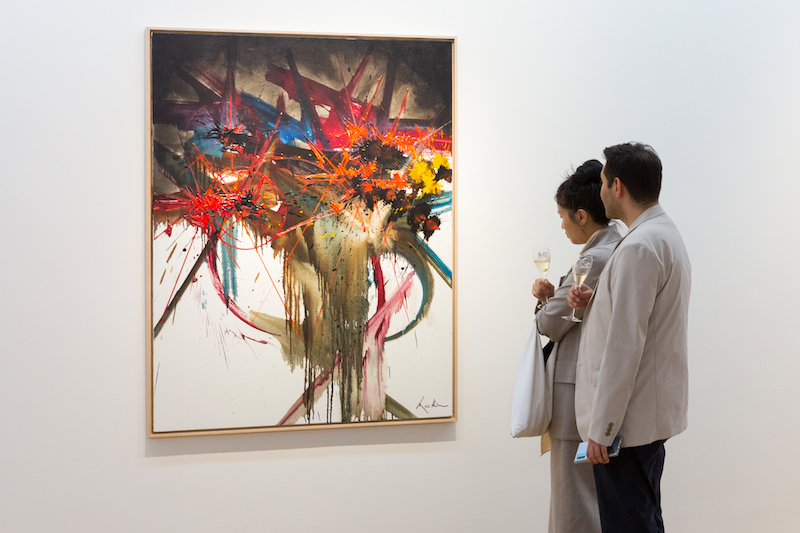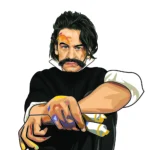Nahmad Contemporary and Perrotin are offering, from November 21st to December 21st, 2019, an exhibition by the late French artist Georges Mathieu (1921–2012), the founder of Lyrical Abstraction and a pioneer of performance art who foregrounded the techniques of tubism and dripping.
This exhibition explores a specific period of Mathieu’s rich and varied work. The 1980s, or more specifically the years between 1983 to 1991, correspond to a well-known era in France and Italy which echoes in Asia in the present time. Described by some as “cosmic,” a sort of pictorial “star wars,” and by others as a “barbaric” time, the 1980s were a turning point for Mathieu’s art following his numerous experiments in the 1960s and 1970s involving geometric variations and the applied arts. In this decade, Mathieu returned to anti- geometric lyricism and depicted his calligraphic language of the 1950s in a totally new form. The works display vehement gestures, broken lines, explosions of painting and color, highly contrastive colors, and in some, the background forms a striking impression of cavernous depths.
This exhibition is the first dedicated to the artist in Hong Kong and pays tribute to Mathieu’s longstanding links with Asia. Early in his career, Mathieu established a parallel between his work and Chinese calligraphy, notably their shared characteristic of spontaneity. Following a dialogue with Dr. Chou Ling and China’s 20th-century master of calligraphy Zhang Daqian in 1956, Mathieu published an essay titled “Connections between certain aspects of lyrical, non- figurative painting and Chinese calligraphy.” In it, he asserted that unlike Western calligraphy, which was limited to the “art of copying,” the most liberated works of Lyrical Abstraction (he cited those of Pollock, Kline, Degottex, and Hantaï) underwent the same “processes” as the calligraphy of the Far East, exuding “a primacy of the speed of execution,” the absence of any “preexistence of form,” the absence of any “premeditation of gesture,” and an “ecstatic state.” Calligraphy was one of the hallmarks of Mathieu’s work. In the 1940s, he was the first to consider a theory of abstract calligraphy and the principle that signs could precede their meanings.
Finally, the artist’s trip to Japan in 1957 formed a decisive episode in the history of Action Painting for his performances before large audiences that were visionary and groundbreaking for their time. A few months before the trip, the manifesto of the Gutai movement, of which Kazuo Shiraga was a prominent representative, stated that its members “highly regard the works of Pollock and Mathieu. Their work reveals the scream of matter itself, cries of the paint and enamel.” The movement’s recognition of this duumvirate reflects Mathieu’s eminence during the 1950s, not only in terms of his international reputation but also his artistic and historical relevance.
The Cobo Social website has published a detailed article on the exhibition.






